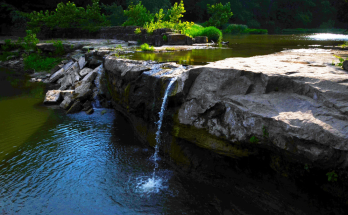The repair of SR 2 cost $42,000 and was completed in four days with no closures of lane. An alternative repair of this type could have been $170,000 and would have required one week of closures to laneways and traffic control. The bridge eventually would have needed replacement at a cost estimated to be $700,000. The repair using carbon fiber will save the bridge from having to be foundation repair Utah with helper bents, and has increased its lifespan for 20 more years.
The second bridge that was repaired using the carbon composite that was manufactured by a shop situated on Lee Road over I-20 near Atlanta The 258-foot bridge was constructed in the year 1962. A quarry as well as several small industries in the area resulted in heavy truck traffic which caused moderate cracking of the deck. The cracks were mostly full depth and would develop into a serious situation. The deck with the most severe cracks was fixed to preventive maintenance.
The event that it was applied to the entire deck
The surface was designed to be used for the installation of shop-made carbon-based plates 0.05 inch thick 2 inches wide and of various lengths. Cracks were not sealed using epoxy, so that experts could check how long the repairs were lasting. The 2-part epoxy glue was placed on the plates, that were then rolled by hand into their place beneath the deck. Analysis of the data later revealed no significant changes to the cracks’ openings.
This repair to just one quarter of an stretch of the end was finished in the fall of 1998. It cost about $4,000. A traditional repair would have involved replacing the deck in part with hydroblasting up to approximately 2.5 inches before re-pouring the deck. The cost would be $290,000 and required four days of closures to lane. Repairs made with carbon fiber in the event that it was applied to the entire deck, would. Not require closures of lane and cost $170,000, which is a savings of $120,000.
APPLICATION
The findings of the study guided the repairs of a bridge on SR 120 across Interstate 85 near Atlanta. In 1998, an over-height vehicle had caused damage to the bridge. Which exposed the reinforcement steel of the concrete girder outside.
The repair was completed Utah foundation repair following the accident. And was completed in two days at an expense of $33,000. The carbon fiber repair enabled the daily flow of 30,000 vehicles to have the bridge’s access. Prior to this, replacement of bridge beams damaged by a storm would been more. Than $130,000 and resulted in a one-month (or longer) road closure.
BENEFITS
Bridges that were repaired using carbon fiber composites. And results of the extensive tests in the laboratory conducted as part of this research endeavor. Show that this technology is able to be utilized effectively and efficiently to repair and rehabilitation of bridges. Because of this study, Georgia DOT was able to make use of carbon fiber composites. To make repairs in an emergency on another bridge.
The benefits of this technology are:
- quick repairs,
- little inconvenience for drivers,
- very little or no requirement for heavy or special equipment,
- an increase in the service life of bridges an increase in the service life of bridges
- an increase on bridge repair.
According to the Georgia DOT Maintenance Office estimates. Carbon fiber could be utilized for 20 bridges each every year throughout Georgia. This method could save around $5 million per year in the event of estimated replacement costs as compared. To repair costs of carbon fiber and an assumption of an average bridge lifespan for 20 years. Rick Deaver is Chief of Research and Development at the Office of Materials and Research, Georgia Department of Transportation.
Abdul-Hamid Zureick is Professor of Civil and Environmental Engineering at the Georgia Institute of Technology.
Brian Summers is State Bridge Maintenance Engineer at the Office of Maintenance, Transportation Management Center, Georgia Department of Transportation.
This article is from TR News, May-June 2003 Issue 226. Transportation Research Board, National Research Council, Washington DC, pp.46-47.




